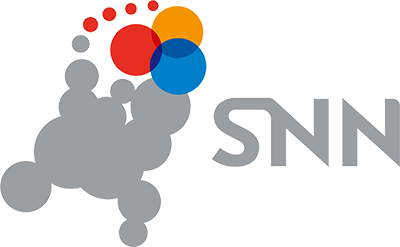A conversation with Victoria Snouck Hurgronje, sustainability driver at NHL Stenden, about sustainability and circularity.
‘At NHL Stenden, we have a social mission and that is to train professionals for the future. And that goes hand in hand with sustainability. There’s increasing awareness within the team. I now describe that as consciously incompetent and we want to convert that to consciously competent. We have a great responsibility with 23,000 students and 2,300 colleagues.’
About circular ambitions
‘In 2018, we merged and launched a new institutional plan. This plan is the first time that sustainability and circularity are explicitly mentioned as key points. That truly was a milestone. At NHL Stenden, everything revolves around broad prosperity in the region: finding a balance between economy, ecology and social well-being. It’s our social responsibility to train professionals for the future. Who can also drive the sustainable transition.
Our education is different from the traditional system. We work according to the Design-Based Education principle, which means that students and teachers work together on real issues from the field. No boring lectures and a lot of talking, but learning by doing.
Sustainability should be transparent, and something we learn and grow from together. Everyone in the organisation, from lecturers to students, should be given the space to contribute to a more sustainable world. This way, we integrate sustainability not only into our business operations, but also into our education and research. The big question is always: What can I contribute to a better world? I’m someone who scrutinises the organisation and continuously asks the question: Can it be more sustainable?’
Green Wave Ambassadors
‘One of our major ambitions is the Green Wave – a sustainability movement within the university with ambassadors. This movement consists of students, lecturers and staff who believe that they can contribute to a better world. We want anyone who is enthusiastic about sustainability to become one of our ambassadors. The goal is to bring about big change with small steps.’
‘These three questions help to make sustainability specific, both at an individual level and within our organisation. Our Green Wave movement is gaining more and more ground within the organisation. We see that people are becoming more aware of their impact, but also that there’s a great willingness to change.’
Green thinking and European tenders
‘A good example of this is that we include green thinking in European tenders. With every tender, we ask ourselves how it contributes to sustainability and the Sustainable Development Goals (SDGs). This way, we make sustainability an integral part of our business operations.
It starts with our procurement processes. For example, we work together with the Circulair Friesland Association and integrate the seven pillars of the circular economy into our purchasing policy. Transparency and trust are crucial aspects.
One circular project we’re proud of is the European tender for our green areas. What started as a list of technical requirements about grass height has now become a programme about biodiversity and welfare. This was a great success because we found a sustainable supplier who shared our vision. Snoek Puur Groen, also a member of the Circulair Friesland Association. Together we have developed a sustainable form in which not only the product counts, but also the contribution to our sustainable ambitions.
Another example is our approach to circular furniture. Relocations within the university are now carried out with furniture that’s already in our possession or can be supplied via a circular supplier such as ‘OPNIEUW!’ (also a member of VCF). It’s pioneering work because the request for new furniture often concerns very functional requirements and it can be difficult to look for other solutions. It can be a bit of a challenge to show people that sustainability can also be aesthetic and practical, but step by step we’re making progress.’
Something that didn’t go so well
‘One example of a project that didn’t go so well is our biotransformer – a small biodigester that we wanted to use to produce biogas ourselves. It was a great idea in itself: an educational tool and a way to convert our organic waste into energy. Unfortunately, practice proved to be stubborn. The digester proved to be picky about what it would process, and often didn’t work as planned. Still, we learned a lot from this. It’s okay if things don’t work out, as long as you learn from them and share that knowledge. Even when projects fail, they can provide valuable lessons.’
Be curious
‘One of the most important lessons I want to convey is: listen to each other. Be curious and seek dialogue with both colleagues and students. It’s in the interaction between people that the best ideas arise and you arrive at solutions that you wouldn’t have thought of on your own. Make sustainability specific, connect it to what people are already doing, and ensure that everyone feels that they’re part of the change. Small steps together can create a big movement.
Sustainability is not an end goal, but a continuous process of learning, adapting and collaborating. So let’s not be afraid of making mistakes, but rather use them as learning experiences. Together we can accelerate the transition to a circular economy!’
Want to know more about Victoria’s working methods at NHL Stenden? She works from a Green office: a place where people work together on sustainability and circularity, with many windows in the central hall of the university, you can see everyone walking around. Anyone can come in with questions. For instance, they changed the coffee cup policy in response to a question from one of the students. You are welcome to visit Victoria!
Back to overview



